In some situations you need to move right, towards the centre of a lane. This is called ‘taking the lane’ and helps you avoid hazards and prevent unsafe passing.
Every situation is different. You will need to decide whether to take the lane depending on the road layout and width, and traffic speed and volume.
This page describes:
How to take the lane
Riding past parked cars
Riding around a roundabout
Using turning lanes at an intersection
Riding on a narrow section of road
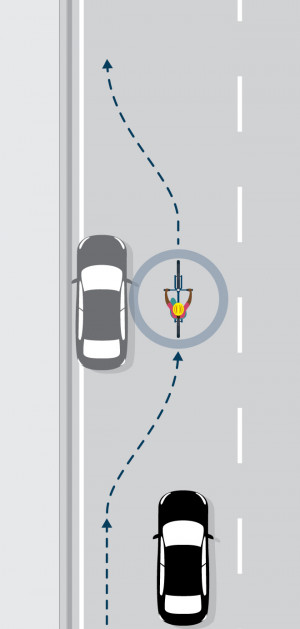
Taking the lane
Q: How long should you take the lane for?A: Take the lane for as long as you need to stay safe. Be courteous to others.
|
Here are some situations where taking the lane can help.
Take the lane to ride past parked cars or other stopped vehicles, allowing at least a metre clearance. After you pass the cars, move back to the left side of the road when it is safe.
Taking the lane here helps you avoid the ‘door zone’ where car doors can open unexpectedly in front of you.
Taking the lane here also helps you see and be seen by people such as pedestrians waiting to cross the road, or drivers leaving driveways.
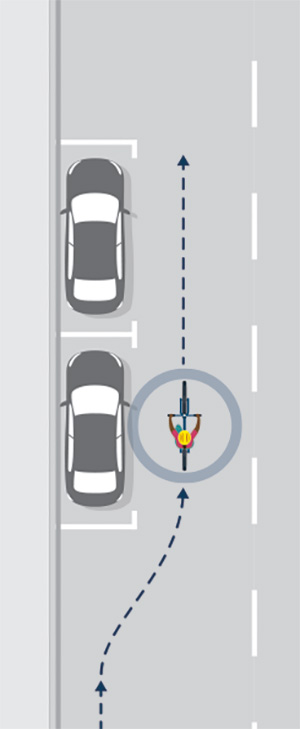
Taking the lane past parked cars
Take the lane to approach the roundabout. Stay in the middle of the lane to ride around the roundabout. After you leave the roundabout, move back to the left side of the road when it is safe.
Taking the lane here puts you in the best position to be seen by drivers. It also helps prevent drivers from passing you while you approach and ride around the roundabout, or crossing your path when they exit.
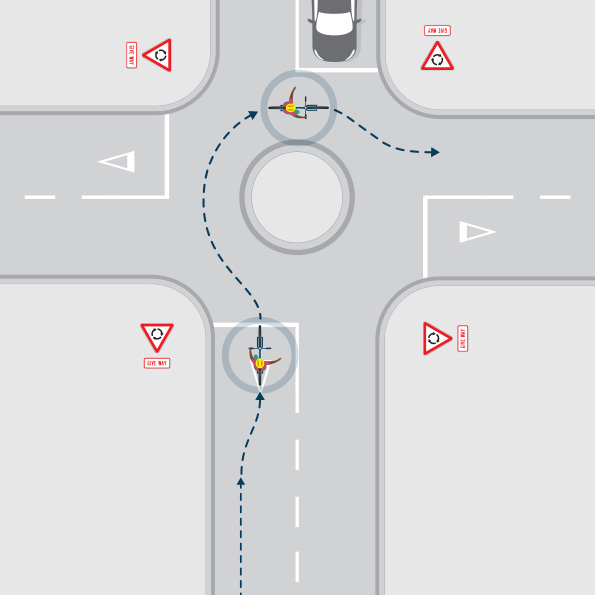
Taking the lane around a roundabout
Take the appropriate turning lane to approach the intersection. Stay in the middle of the
lane to ride through the intersection. After you leave the intersection, move back to the left side of the road when it is safe.
Taking the lane in the turning lane helps drivers realise you are planning to turn, reinforcing the message from your hand signal. It also helps prevent drivers from passing you while you approach or ride through the intersection.
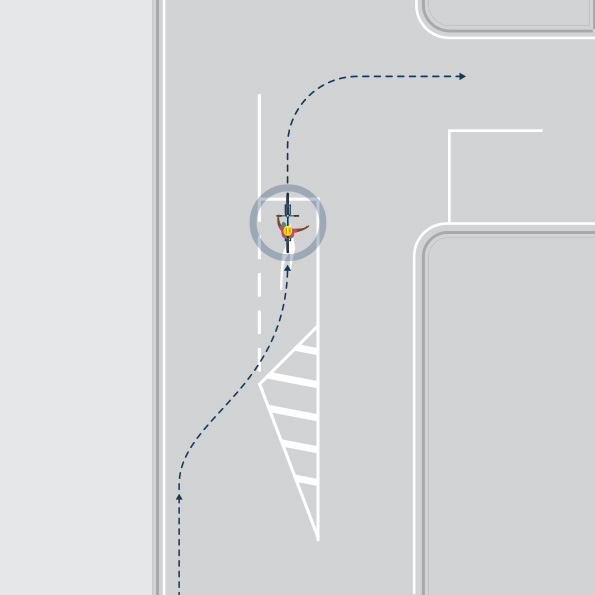
Taking the lane when using turning lanes at an intersection
Take the lane to ride the narrow section of road. When the road widens, move back
to the left side of the road when it is safe.
Taking the lane here helps prevent drivers passing you where the road is too narrow
to pass safely. For longer sections of narrow road, check regularly for following traffic, allowing it to pass when it is safe.
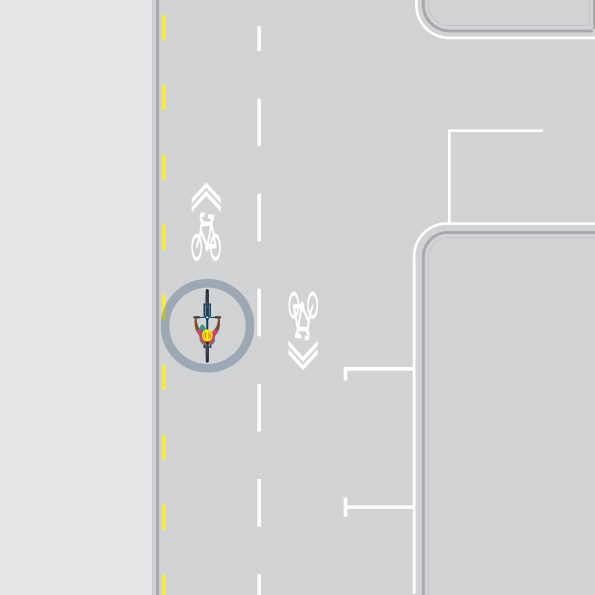
Sharrow markings